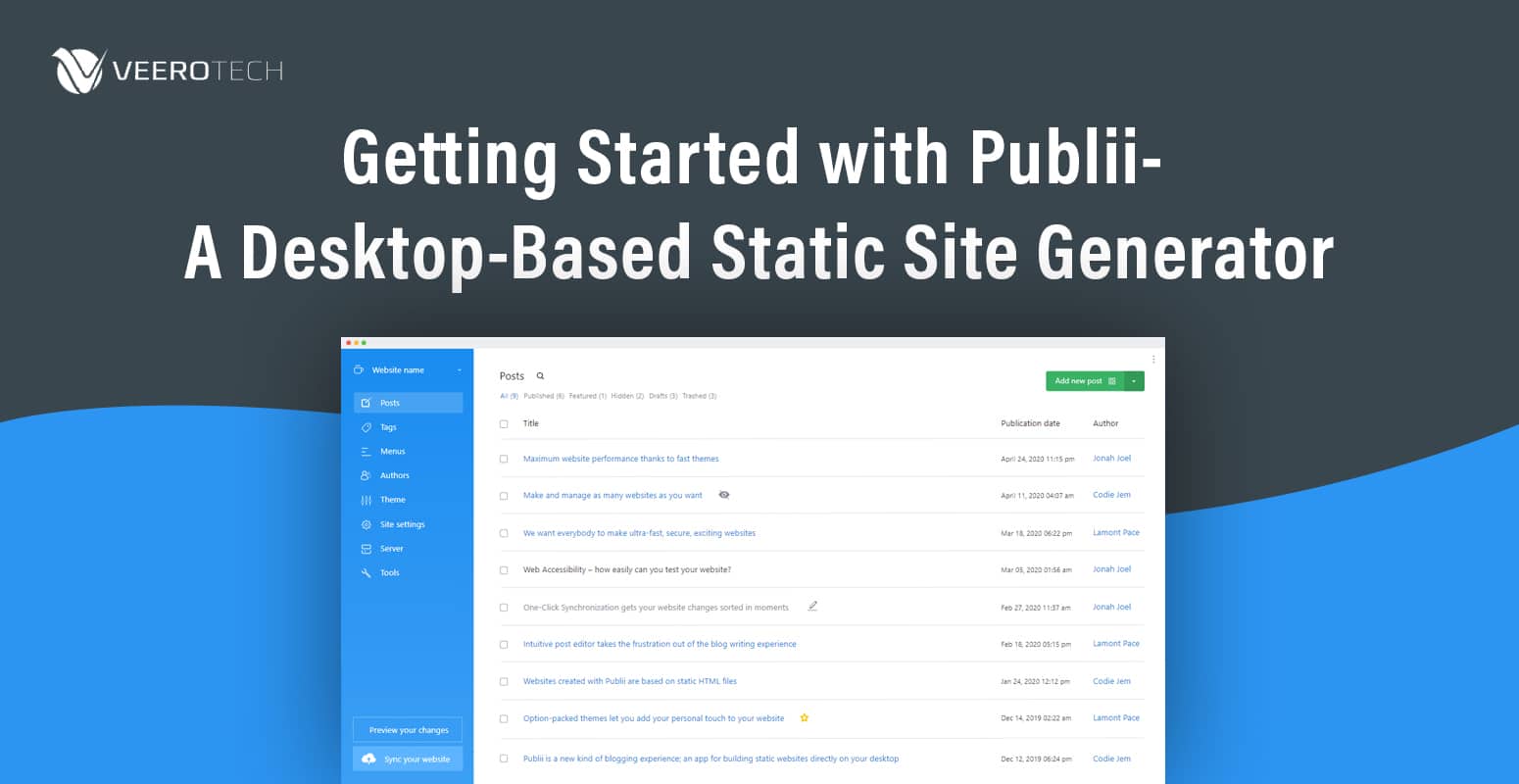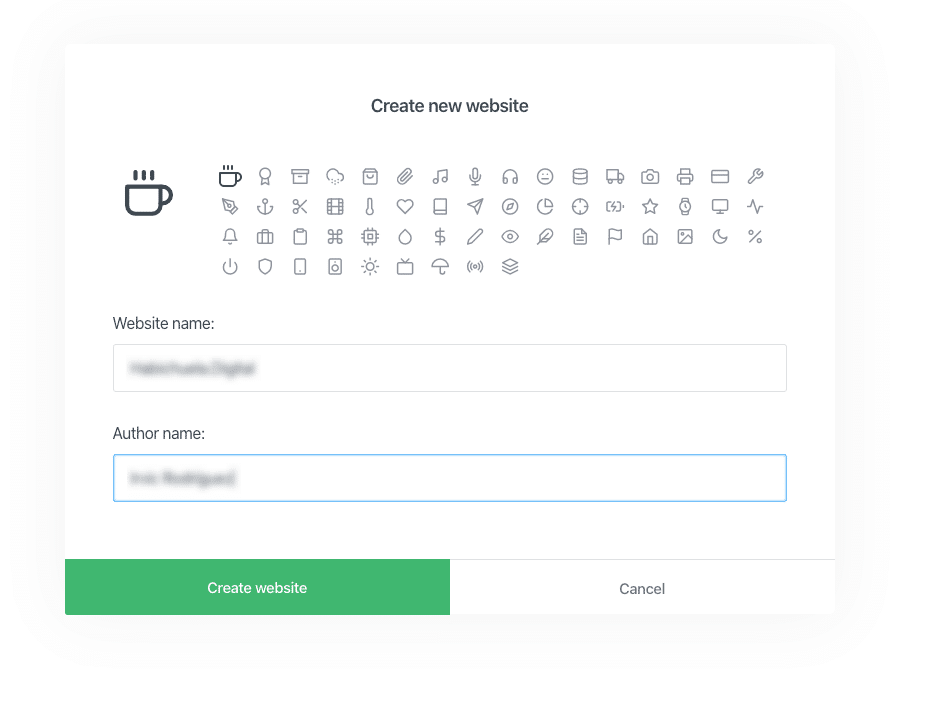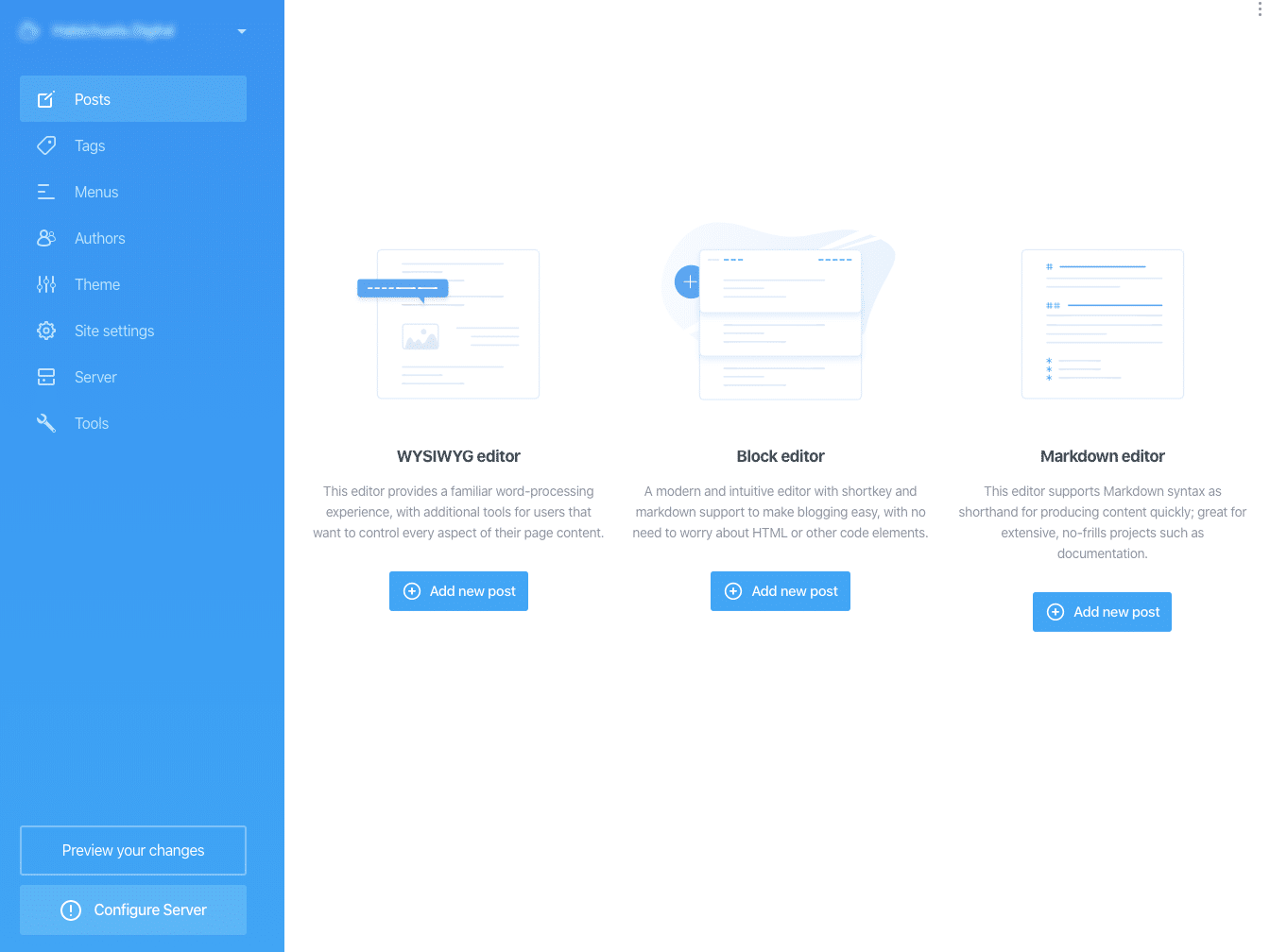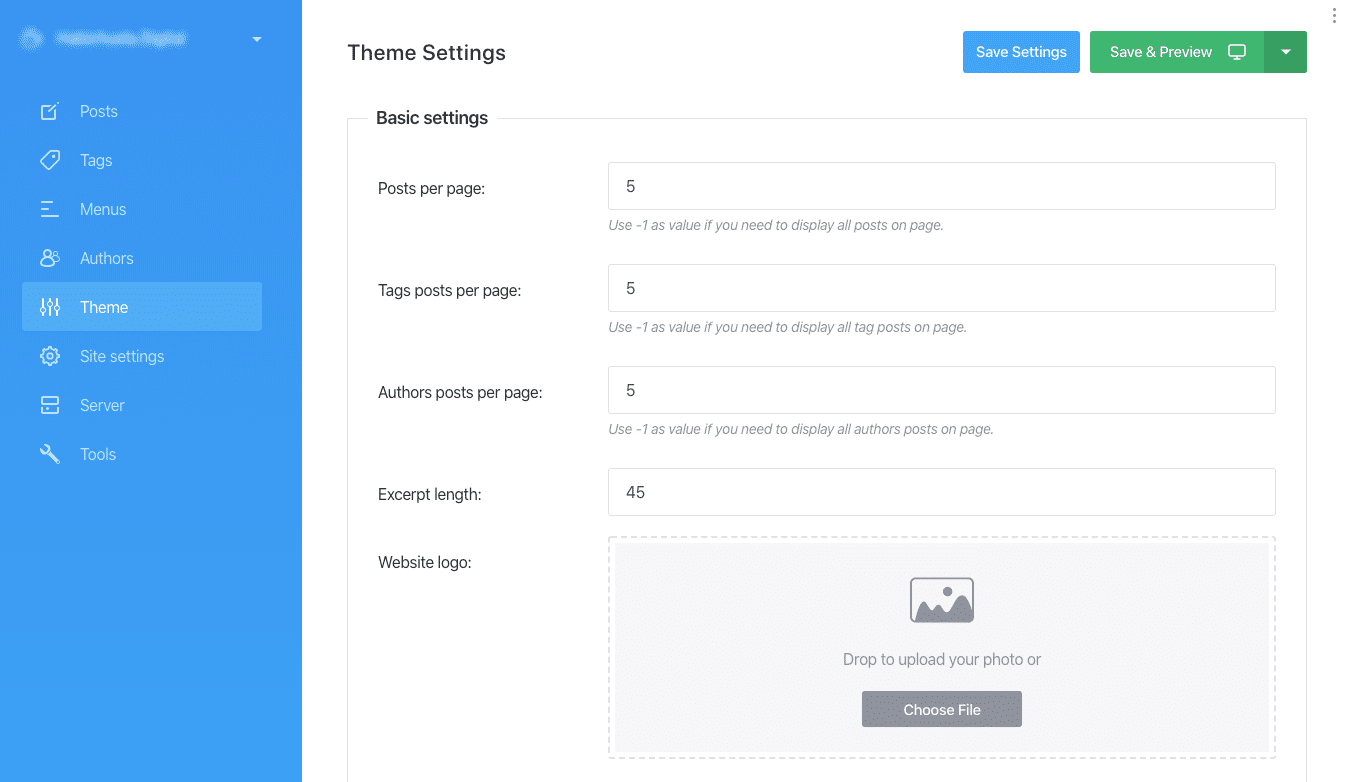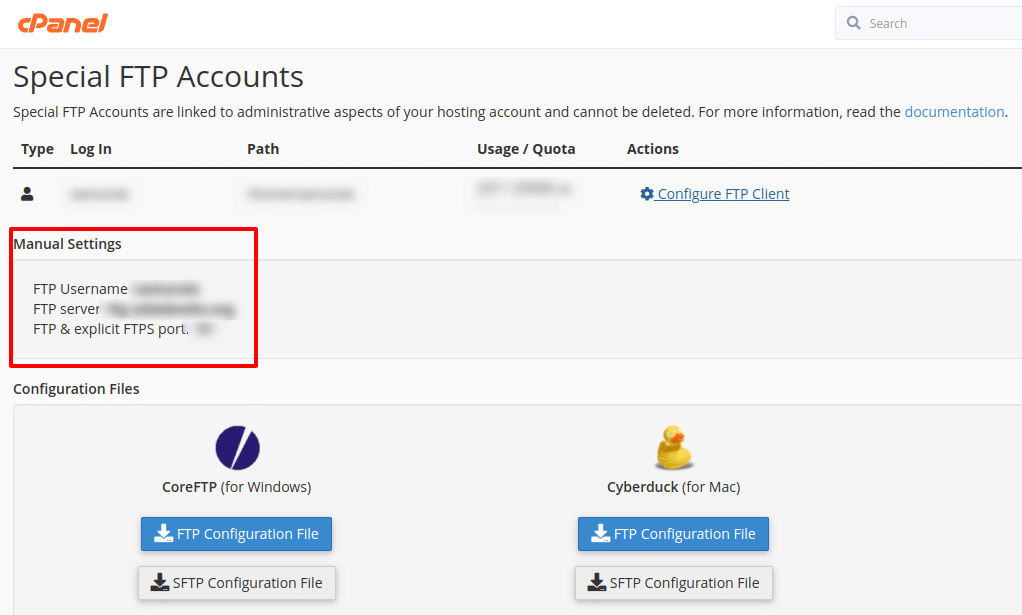In this article, we will take a closer look at Publli, a desktop-based static site generator. Static website generators have been around for a long time. However, they have not been as popular as dynamic websites with database back-end web applications, most likely because dynamically rich websites easily modify, maintain, and administer content through a beautiful dashboard, such as WordPress and Joomla.
Introduction to Publii – A Desktop-Based SSG
Static website generators are simple to use for developers, geeks, and hackers with high coding abilities, but they are difficult for the less proficient users. Publii is a desktop program for Windows, Linux, and macOS that allows users with little coding skills to construct and publish a website efficiently. Publii is a web development program that introduces a novel concept: the first desktop static-website CMS. Publii builds a safe, fast static website without all the fuss. It has novices but boasts vast choices and functions that allow experienced web developers to make more sophisticated changes.
Unlike static site generators, which may be complex and hard to use, Publii provides an easy to use UI similar to server-based CMSs like WordPress or Joomla! Users can generate articles and other site content and decorate their site using a choice of built-in themes and features. Users may enjoy the benefits of a super-fast and secure static website, as well as all of the simplicity that comes with it.
The Benefits of Using Publii
- Publii uses a desktop-based CMS software, and as a CMS it does not require PHP or MySQL on the server-side.
- Because the resulting site is in pure HTML format, it may run on low-resource servers.
- The ability to adjust and fine-tune website settings using the desktop program.
- The ability to inject code into the header and footer, as well as add custom files (such as. htaccess) to the file system.
- Powerful user-interface.
- It includes a primary yet powerful dashboard-like desktop similar to a web application that allows users to add/manage pages, menus, tags, authors, website settings, and style. There is only one template in the basic installation (theme), though you can quickly add more.
What Can You Create With Publii?
- Static webpages
- Blogs
- Company websites
- Portfolio
- Gallery
Features
- Pages, Menu, Tags, Author Management
- Rich text editor (WYSIWYG)
- Layout management
- One-click deployment
- Backup management
- Regenerate thumbnails
- Media/ File Manager
- WP Importer
- Built-in FTP and SFTP support
- Settings manager
- SEO Ready
- Social media tags support
- Sitemap support
- AMP (Accelerated Mobile Pages) support
- GDPR (Cookies banner)
- Website speed file optimization
- Nice-URL
Advanced Options for Developers
- Custom CSS
- Custom HTML
- Easy to use multiple deployment options
- Backup management
- Multiple theme/Templates
Multiple Deployment Options
- GitHub
- GitLab
- FTP/SFTP
- Netlify
- Google Cloud
- Export it as a ZIP file
Themes Marketplace
Publii has its own themes marketplace for you to choose templates from. It includes lovely multipurpose themes for blogging, magazines, digital documentation, and creative portfolios. The majority of the existing themes are available for free download and use.
Themes may add themes by simply dragging and dropping the zipped theme file into the themes manager.
Publii for Designers and Developers
The creators of Publii have provided detailed guidance, making it simple to create a theme for Publii. It’s a lot like Ghost blogging themes.
Publii is a unique alternative to the geeky method of creating a static-generated website; it saves time and work. It is the first of its type, aimed at those with no coding skills.
Publii bridges the functionality gap between CMSs and static websites; in terms of functionality, using Publii delivers the same experience as using a CMS like WordPress; select your theme, tweak it to your desire; add articles, photographs, tags, and menus, then publish for the world to see.
However, it differs in functionality in two significant areas: where the development is done and how it is available on your host server.
To grasp these distinctions, we must first become acquainted with how typical CMSs like Joomla! or WordPress operate. The CMS (Content Management System) is placed directly on your host server; when a user views your website, they connect to the CMS.
Any material you generate for it, like articles or pages, is stored in a database by the CMS. When a visitor goes to the website, their browser requests the page. The CMS will execute PHP code to create the page layout, retrieve any content for the page from its database, insert it on the page according to the code’s instructions, style it according to the CSS rules, and generate the page.
As you might expect, although this technique of providing the page allows for complicated routines and excellent features, it also results in a large number of requests and stages between the first request and the delivery of the created page to the browser, significantly affecting load speeds.
In Publii, these two parts are considerably different: where the software is executed and how files are made available on the server.Unlike other CMSs, Publii is a desktop application, which means installing it on your local computer, just like any other software or software, rather than on your server. This liberates the app from the traditional limits imposed by being server-side; for one thing,you are not required to be online and for another, you may construct and develop your website even if you don’t have access to a server.
The shift to desktop-based apps improves security significantly by the primary way. CMS-based websites are hacked; aside from social engineering, the attacker might access the administrator area or even steal data from visitors.Because Publii’s code is entirely on your desktop rather than the server, a hacker cannot access your website’s admin without first gaining access to your home computer, a significantly more secure environment.
Publii is Meant for Static Websites
We mentioned earlier in this article the several steps a CMS must take between the initial request from a browser for a specific site and the final production and delivery of the website to the browser. Because Publii is a desktop program, these processes are carried out on your local computer rather than on the server.
Consider this: using Publii on your local computer, you may build a website, choose a theme, add articles and tags, and otherwise customize any part of your site. When delivering the program to your server, Publii builds the whole website as static files, which it then uploads to your host.
It implies that the website on your server is static; when a visitor’s browser requests a particular page, the server provides the files that Publii has previously prepared. This implies that no code is run on the server, no database is consulted, and no pages are generated; instead, the request is accepted, and the finished files are instantly provided to the client.The static version of a site will always be substantially quicker than a dynamic, CMS-based site with the same layout since fewer steps are necessary for the browser to acquire the webpage’s data.
Beginners and developers alike will enjoy this user-friendly experience. Publii focuses on three key criterion:
- Publii websites should be quick.
- Second, they should be safe.
- Third, theyneed to be accessible even to total beginners.
Static websites have traditionally been challenging to use since they require human programming or complicated technologies to construct. Publii, on the other hand, employs easily comprehensible CMS-style authoring tools to make it simple for users of all ability levels. Following the creation of your first website in Publii, a simple administrator interface allows you to quickly make content, using an efficient text editor that also allows you to modify images.
Menus and tags (Publii’s equivalent of categories) may be added and allocated instantaneously, and each area is labeled correctly, making it easy to navigate in the backend.
Once your website is ready to go, there’s no need to fiddle around with inconvenient transfers or FTP tools; all Publii needs are some simple credentials to access your host’s server, and you can upload and update your website with the click of a button. Publii even remembers which files are new and edited so that only the modified or new data is updated when updating.
Getting Started with Publii
The interface of Publii is simple to use, but it doesn’t imply sophisticated users won’t find it useful for their more particular needs.
Publii includes extensive SEO options for better managing your metadata and search engine ranking, as well as specific customization options for color and layout changes, social media sharing, and even the creation of AMP (Accelerated Mobile Pages) for an even faster experience on mobile phones and tablets.
The primary themes in Publii are, of course, responsive, which means that users with a wide range of screen widths may enjoy the entire website experience.
Override options allow you to add your code to the page’s head and footer, and you can even design your themes using CSS3, Semantic HTML5, and Handlebars support, offering the complete spectrum of current developers tools.
Requirements
To run Publii, you will need to meet the minimum requirements:
- for PCs, a 64-bit version of Windows 7, 8, 8.1, or 10 is required for installation.
- On Mac, a minimum of macOS 10.9 or higher is required for installation.
- On Linux, any 64-bit version is necessary.
- Publii is designed to function with any current computer setups as long as they fulfill the minimal criteria for the listed operating systems in terms of computational power.
The first step is to download Publii by clicking on this link: Get Publii.
When you download and launch the program, you should see something like this:
Click Add New Website, and you should see:
Now, enter the name of your website and your author name in the respective fields. When you finish building your website, you should see something like this:
When you see anything similar to the image above, you’re ready to start writing! The next step is to Go to Site Settings and select a theme. Publii already has one free theme, which is set as the default in the Site settings. If you wish to modify it, you may find different themes on their website. Be aware that some of the themes are free while others are not. After finishing with design, you can see it by clicking the Preview Changes button in the bottom left corner of Publii.
You can also customize your theme by adding hero images, custom banners, changing fonts, and so on. Once you are done setting up your site, simply start adding blog posts. When all is ready, you can safely publish your site to the live server.
Publishing Your Publii Site
The best option to publish your site is to use FTP/SFTP. At VeeroTech, all our hosting plans come with free support for all FTP and SFTP clients, including of course Publii.
First, you’d need to locate your FTP/SFTP details. In cPanel, head to FTP Accounts. You can then add your own FTP account; when done, simply locate its details on the same page.
You will then need to input the above details in the Deployment section of your Publii app. Once you push changes, your website will be live on your VeeroTech hosting panel.
Conclusion
Publii is a unique app in the sense it lets you build websites right from your computer itself, without even accessing the web browser. While it may not be able to create all types of complicated sites, it can still serve the needs of a wide majority of users.
If you haven’t given it a try already, be sure to give Publii a spin sometime! Again, with our hosting, your static site will run blazing fast in no time!
If you have any web hosting questions please feel free to reach out to us. We're happy to help.

